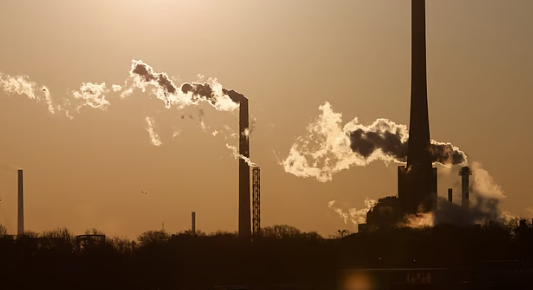Syllabus:
GS-3: Conservation, environmental pollution and degradation, environmental impact assessment
Context: Emission Gap Report 2025 finds that despite new climate pledges made by countries, the expected temperature rise over this century remains dangerously high, signalling a potentially serious escalation in climate risks and associated damages.
Key Findings
- Rising Global Emissions:
- Global greenhouse gas emissions hit a record 57.7 Gt CO₂-eq in 2024, marking a 2.3% increase over previous years.
- The largest absolute emission increase were recorded in India and China, though India’s per capita emissions remain below the global average.
- Inadequate Impact of Updated NDCs:
- Revised Nationally Determined Contributions (NDCs) have only slightly reduced projected warming, with end-century temperature rises still estimated at 2.3°C–2.5°C, far above the 1.5°C–2°C Paris goals.
- The implementation gap is significant as many countries remain off-track in meeting their own NDC commitments.
- Required Emission Reductions for Climate Targets:
- A 28% cut in emissions by 2030 will put the world on track to achieve the 2°C target while a 55% reduction in emissions by 2035 will enable the world to meet the 1.5°C goal.
- Diverging Trends Among Major Emitters:
- Some major emitters including China and several G20 members, show indications of approaching an emissions peak.
- Others such as the United States, face policy reversals and increased emission projections, slowing global progress.
- Temperature Overshoot Risk:
- The report warns of a serious risk of overshooting global temperature limits, which could trigger severe and potentially irreversible climate impacts.
Key Recommendations
- Strengthening Climate Commitments:
- Countries must reinforce and fully implement their 2025 NDCs with more ambitious, time-bound emission reduction goals aligned with the 1.5°C pathway.
- The implementation gap needs to be closed by ensuring that policy commitments are translated into measurable emission cuts.
- Accelerating the Clean Energy Transition:
- Nations should speed up the shift toward renewable energy, improve energy efficiency, and phase out fossil fuel subsidies and investments.
- Scaling up methane reduction efforts and advancing carbon capture and storage are essential for deeper decarbonization.
- Expanding Nature-Based and Technological Solutions: Greater investment is required in nature-based solutions such as reforestation, along with emerging low-carbon technologies that can support large-scale emissions reduction.
Emission Gap Report
- It is a key scientific assessment published annually by United Nations Environment Programme (UNEP).
- It measures the gap between projected emissions under current national policies and the emission levels needed to meet the Paris Agreement’s temperature goals.
- It uses standardized emission scenarios and climate modelling techniques to provide an independent, objective measurement of global progress on climate mitigation, making it a credible reference for policymakers worldwide.

